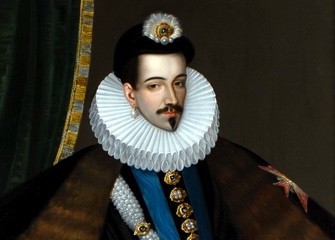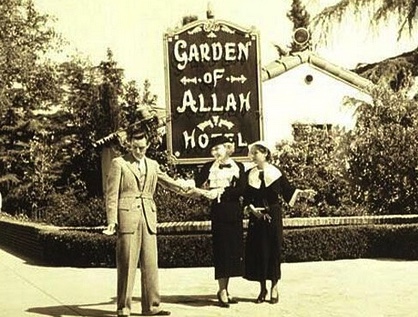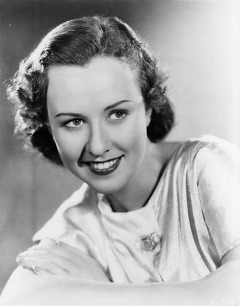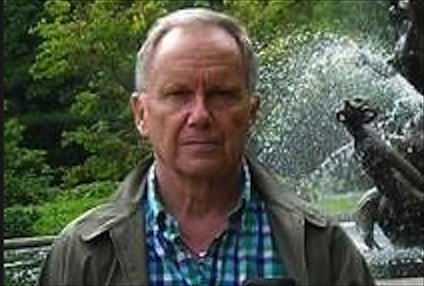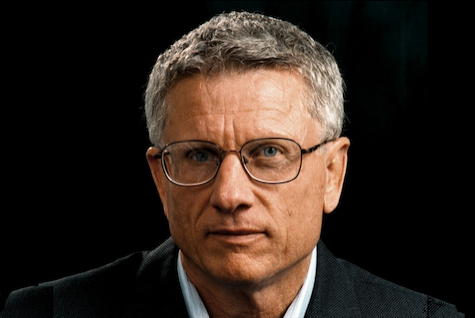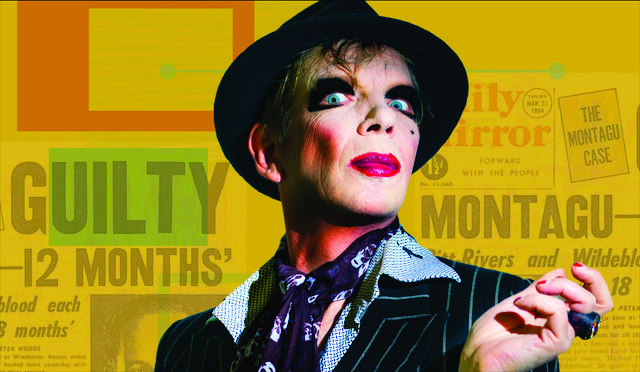|
presents THIS DAY IN GAY HISTORY based on: The White Crane Institute's 'Gay Wisdom', Gay Birthdays, Gay For Today, Famous GLBT, glbt-Gay Encylopedia, Today in Gay History, Wikipedia, and more …
Collected by Ted September 19 [{(o)}]|[{(o)}]|[{(o)}]|[{(o)}]| [{(o)}]|[{(o)}]
1551 – The last French king of the Valois dynasty, Henry III (d.1589) was widely accused of sodomitical relations with his "minions," but such charges probably say more about the viciousness of the political and religious controversies of sixteenth-century France than they do about Henry III. Christened Alexandre-Édouard soon after his birth on September 19, 1551, he took the name Henry only in 1564. He was the fourth son of Henry II (1519-1559, reigned 1547-1559) and Catherine de Medici (1519-1589). Henry was successively Duke of Angoulême (1551-1560), Duke of Orléans (1560-1566), and Duke of Anjou (1566-1574), before being elected King of Poland in May, 1573. He spent only six months in Poland before the death of his brother Charles IX (1550-1574, reigned 1560-1574) on May 30, 1574 made him King of France. Henry had the misfortune to reign over a France plunged since 1562 into religious warfare between its Protestant minority and an intolerant Catholic majority. The struggle between the competing religions threatened the prestige, stability, and authority of the French monarchy. Henry III was a hard-working administrator and proponent of a centralized monarchical state at a time when France's great nobles still claimed considerable local authority. Henry III faced considerable opposition, and scurrilous pamphlets denounced him for tyranny, heresy, and sexual depravity. Many of Henry's contemporaries expressed disgust with his personal conduct, especially his love of jewelry, his occasional transvestism (in the context of masked court balls) , and particularly his marked affection for his so-called "minions," a loyal band of youthful courtiers rumored to be his lovers. Many historians interpret Henry's alleged effeminacy and homosexuality as symptomatic of monarchical decadence. But the only evidence for Henry's homosexuality is court gossip and attacks by the king's critics, at first his Protestant enemies, then the fanatical Catholic League, which demanded that Henry take a harder line against Protestantism, as well as nobles from France's great houses, who resented the influence of favorites from lesser families. Sodomy was never the only accusation levelled against the king. As David Teasley has shown, contemporary propaganda "associated [the king's reputed sodomy] with a host of other sins: irreligion, atheism, sorcery, treason, rape, tyranny, monstrous animalistic behaviour, and the killing of children." The charges of sodomy should probably be seen as no more than an indication that many people viewed the king's political and religious policies to be subversive of the natural order. Jacques Clément, a Dominican monk convinced that he was doing God's work, assassinated Henry III on August 1, 1589. His Protestant cousin, Henry of Navarre, succeeded him as Henry IV (1553-1610, reigned 1589-1610), but managed to impose his rule only after a long civil war and conversion to Catholicism. For a long time after his death, Henry was assumed to have been homosexual or at least bisexual. The scholar Louis Crompton provides substantial contemporary evidence of Henry III's homosexuality, and the associated problems at court and politics. Despite this, it is still disputed. For example, some modern historians, such as P. Erlanger, J. F. Solnon, Nicolas Le Roux, and J. Boucher found evidence to support the idea that Henry was not homosexual (though still perhaps bisexual), as he had many famous mistresses. They found that there were no men named with whom he could have had sex, and that he was well-known at the time for his taste in beautiful women. They concluded that his supposed homosexuality was based on his dislike of war and hunting being interpreted as effeminate, an image cultivated by political opponents (both Protestants and Catholics) to turn the opinion of the French people against him. Most recently, Gary Ferguson has offered a detailed assessment of Henri III and his court, in the context of a discussion of the question of homosexuality in the French Renaissance. In 1570, discussions commenced to arrange for Henry to court Elizabeth I of England. Elizabeth, almost 37, was in need of a husband in order to produce an heir. However, nothing came of these discussions. Elizabeth is viewed by historians as having intended only to arouse the concern of Spain, rather than to have seriously contemplated marriage. The chance of marriage was further blighted by their differing religious views - Henry was at least formally a Catholic while Elizabeth was a Protestant - and his opinion of Elizabeth. Henry tactlessly referred to Elizabeth as a putain publique (a "public whore") and made stinging remarks about their difference in age. Upon hearing (inaccurately) that she limped because of a varicose vein, he called her an "old creature with a sore leg"
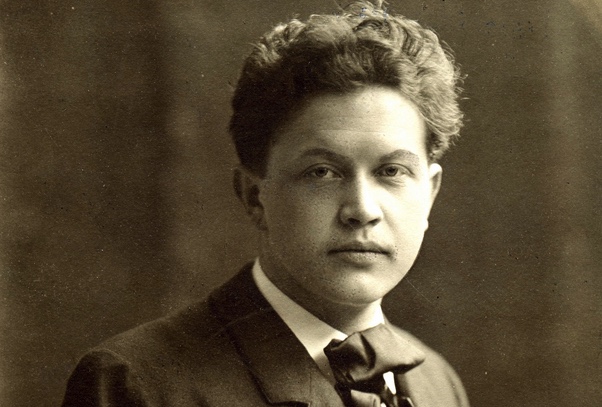
1883 – Hjalmar Bergman (d.1931 in Berlin, Germany) was a Swedish writer and playwright. The son of a banker in Örebro, Bergman briefly studied philosophy at Uppsala University but soon broke off his studies and took up the life of a free writer. He married Stina Lindberg, the daughter of actor and stage producer August Lindberg and Augusta Lindberg, and sister of Per Lindberg. A complicated and unhappy union, the marriage heightened rather than lessened Bergman’s anxieties. Stina became his love-hate object in his rebellion against authority while he gappled with his homosexuality. His love of young boys and his long, open relationship to Werner Fütterer, a 14-year old German schoolboy when they first met in 1922, did nothing to improve this marriage. Up to his father's death in 1915 Bergman was heavily sponsored by the family patriarch; after the old man died from a stroke it turned out that the family business had become highly indebted and Bergman was forced to start making money out of his writing and court readers in a more outgoing and more entertaining manner. He rose to the challenge and in the following ten years reached the peak of his work. Much of his output takes place in a small town in mid-Sweden, which is growing into a parallel universe in a Balzacian manner. The shameful secrets of a dozen of interwoven families gradually come out of the closet as the stories grow increasingly symbolic. A pessimistic outlook is always counterbalanced by a grotesque humour – indeed in a book like Markurells i Wadköping the latter almost succeeds in completely shading the former. After an unsuccessful bout as a manuscript writer in Hollywood, Bergman's alcoholism and narcotics abuse took over, from which he died prematurely; his final novel Clownen Jac mirrors his awareness of his drift into self-destruction as well as his belief in the honesty and purpose of artistic spectacle.
1895 – The Virginia Supreme Court reverses the sodomy conviction of a 10-year-old boy, claiming that it was impossible for him to have committed the act.
Glesca was also the longtime companion of Emily Woodruff, theatrical benefactor and main patron of the Springer Opera House in Columbus, Georgia. Emily was married to Hume Cronyn, though they never lived together and Emily insisted the marriage remain a secret. Marshall and Woodruff are buried together at Parkhill Cemetery, Columbus, Georgia.
1910 – Margaret Lindsay (d.1981) was an American film actress. Her time as a Warner Bros. contract player during the 1930s was particularly productive. She was noted for her supporting work in successful films of the 1930s and 1940s such as Jezebel (1938) and Scarlet Street (1945) and her leading roles in lower-budgeted B movie films such as the Ellery Queen series at Columbia in the early 1940s. Critics regard her portrayal of Nathaniel Hawthorne's Hepzibah Pyncheon in the 1940 film adaptation of The House of the Seven Gables as Lindsay's standout career role. Born as Margaret Kies in Dubuque, Iowa, she was the oldest of six children of a pharmacist father who died in 1930 before her Hollywood career began. According to Tom Longden of the Des Moines Register, "Peg" was "a tomboy who liked to climb pear trees" and was a "roller-skating fiend". After attending National Park Seminary in Washington, D.C., Lindsay convinced her parents to enroll her at the American Academy of Dramatic Arts in New York. She then went abroad to England to make her stage debut. She appeared in plays such as Escape, Death Takes a Holiday, and The Romantic Age. Lindsay was often mistaken as being British due to her convincing English accent, which impressed Universal Studios enough to sign her for their 1932 version of The Old Dark House. Early in her career, Lindsay lived with her sister Helen in Hollywood. Later in life, she lived with her youngest sister Mickie. Despite being romantically linked to actors such as William Gargan and Edward Norris, she never married. She was rumored to have had a romantic affair with actress Janet Gaynor. According to biographer and historian Will J. Mann, Lindsay was the life partner of Broadway actress Mary McCarty.
1934 – The "fifth Beatle," manager Brian Epstein (d.1967), also managed numerous other groups like Gerry & The Pacemakers, Billy J. Kramer and the Dakotas, and solo artists like Cilla Black. The Beatles recorded a demo in Decca's studios — paid for by Epstein — which he later persuaded George Martin to listen to. Epstein was then offered a contract (after Martin had auditioned the group) by EMI's small Parlophone label, even though they had previously been rejected by almost every other British record company. Perhaps few individuals were less likely to create the public image and oversee the career of the world's most famous rock group than Brian Epstein. Born into a family of affluent Liverpool Jewish furniture merchants, Epstein seemed destined for a career in their business. He was attracted, however, to such 'unmanly' pursuits as fashion design and the stage, which, along with his closeted homosexuality, put him at odds with his family's aspirations. Epstein left school at sixteen to work at one of his family's stores until he was called up for military service in 1952. While Epstein was in the Army, he had a tailor make an officer's uniform for him that he wore when cruising the bars of London, but was arrested one night (for impersonating an officer) at the Army and Navy Club in Piccadilly by the Military Police. Epstein managed to avoid a court martial by agreeing to see an army psychiatrist, who uncovered Epstein's sexuality. He was discharged from the army after 10 months on the medical grounds of being "emotionally and mentally unfit", although Epstein later stated that his first homosexual experience was after he returned to Liverpool. Epstein then spent a year studying acting at teh Royal Academy of Dramatic Arts, but dropped out shortly after his arrest for "persistent importuning" outside a men's public toilet in Swiss Cottage, London. He returned to his family's business, where he became the manager of the store's record department. It was in this capacity that, in October 1961, he first heard of the Beatles, a Liverpool band whose fans were seeking their recordings. Epstein was unable to locate these records and, intrigued by the mystery, ventured into the Cavern Club, where he encountered John Lennon, Paul McCartney, George Harrison, and then-drummer Pete Best. Within two months, although he had no entertainment or managerial background, Epstein had signed the group to a contract. Over the next year, he transformed the group's image from that of leather-clad ruffians to 'Mods' attired in fashionable suits with longish hairstyles, creating, in effect, an androgynous look for his protégés. Epstein also successfully negotiated the Beatles' first recording contract with EMI Parlophone, replaced Best with Ringo Starr. Though Epstein was homosexual, it was not publicly known until a long time after his death, although it was an open secret among his friends and business associates. By 1964, when the Beatles and his other acts took America by storm, Epstein seemed to personify worldly success. He was, however, living in an almost constant state of anxiety lest his homosexuality - and his attraction to rough and often abusive young men - become public knowledge, as male homosexual acts were still illegal in Britain and any scandal might negatively affect the Beatles' career. It has often been suggested that Epstein's devotion to the Beatles was based on an unrequited love for John Lennon. Speculation about a possible affair between them has existed since the two holidayed together in Spain in 1963.  Epstein with the Beatles Paul McCartney said that he and the other Beatles knew that Epstein was a homosexual, but they did not care, because Epstein greatly encouraged them when record companies turned them down, and used to take them to late-night drinking clubs they had previously never had access to. Although John Lennon often made sarcastic comments about Epstein's homosexuality to friends and to Epstein personally, nobody outside their closed circle was allowed to comment on it. Ian Sharp — one of Lennon's art school friends — once made a sarcastic remark about Epstein but was sent a letter by Epstein's office within forty-eight hours that demanded a complete apology. Sharp apologized but was then completely ostracized, and was told by McCartney in a letter to have no contact at all with any of them in the future. There were rumors of a brief sexual encounter between Lennon and Epstein when they both went on a four-day holiday together to Barcelona, Spain in April 1963. Lennon always denied this, telling Playboy in 1980: "It was never consummated, but we had a pretty intense relationship." Lennon's first wife Cynthia also maintains that Lennon's relationship with Epstein was platonic. A fictionalized account of the Spanish holiday was portrayed in the film 1991 The Hours and Times. Lennon's friend and confidant, Peter Shotton, claimed in his book, The Beatles, Lennon and Me, that under provocation from Epstein, Lennon did partly give in: "I let him toss me off, and that was it." Biographer Hunter Davies also recalled Lennon telling him he had consented to an encounter "to see what it was like." Writer Albert Goldman expanded on both claims in his The Lives of John Lennon, alleging a longtime affair between the two men. Epstein died of an accidental drug overdose at his home in London in August 1967. The Beatles' early success has been attributed to Epstein's management and sense of style. Paul McCartney said of Epstein: "If anyone was the Fifth Beatle, it was Brian."
1942 – Paul Huson is a British-born author and artist currently living in the United States. In addition to writing several books about occultism and witchcraft he has worked extensively in the film and television industries. Huson was born in London, the son of the author Edward Richard Carl Huson and painter and motion picture costume designer Olga Lehmann. Huson attended Leighton Park School from 1956 through 1959, then entered the Slade School of Fine Art at the University of London as a Diploma student from 1959 through 1963, with a principal in painting under Andrew Forge and a subsidiary in theatrical design under Nicholas Georgiadis and Peter Snow. In 1963 he was awarded an Associated Rediffusion Scholarship to study film under Thorold Dickinson for a further post graduate year. After a walk-on role in René Clément's film starring Gerard Phillipe, Monsieur Ripois, Huson acted in Laurence Olivier's film of Richard III playing the part of Edward, Prince of Wales, one of the two Princes in the Tower. From 1965 through 1968 Huson worked as an art director for BBC television and Columbia Pictures, UK, before emigrating to the United States, where he began writing books and stories and scripts for American television, which included the television series Family and James at 15. Between 1982 and 1987 he and his life-partner William Bast wrote and produced three television series Tucker's Witch, The Hamptons, and The Colbys (a spin-off of the Aaron Spelling series Dynasty); The Colbys won the 1986 People's Choice Award. In 1989 he and Bast wrote a two-part series Twist of Fate, followed in 1991 by The Big One: the Great Los Angeles Earthquake, another two-parter, which was instrumental in alerting Los Angeles to their inadequate earthquake response arrangements at that time. In 1995 Huson and Bast wrote the teleplay for Danielle Steel's popular novel Secrets. In 1995 they wrote Deadly Invasion: The Killer Bee Nightmare; a paranormal thriller The Fury Within; and Power and Beauty, a controversial biographical teleplay about socialite Judith Exner and her relationship with President John F. Kennedy. Huson subsequently wrote a number of popular books on occult and allied subjects: the influential Mastering Witchcraft (1970) a study of tarot symbolism The Devil's Picturebook (1971); Mastering Herbalism (1974); an introduction to parapsychology How to Test and Develop your ESP (19750); two novels, The Keepsake (1981), and The Offering (1984), and a second work on tarot symbolism and the history of tarot reading, Mystical Origins of the Tarot (2004). He generally illustrates his non-fiction books himself, and designed a deck of tarot cards based upon his research, Dame Fortune's Wheel Tarot (2009). Huson lives in Los Angeles. His frequent collaborator and lover for forty-nine years was William Bast, until Bast's death in 2015.
1945 – Although John Morgan Wilson has spent much of his adult life as a newspaper reporter, columnist, editor, and a writer of fact-based television scripts, he is best known today as the author of a gay male mystery series featuring a flawed and often exasperating amateur detective named Benjamin Justice. Wilson was born on a Tampa, Florida army base where his doctor father was stationed. Shortly after his birth, the family moved back to southern California, and Wilson grew up and was educated in Manhattan Beach. He attended Michigan State University and San Diego State University, and he graduated from the latter with a B. A. in journalism in 1968. His journalism career has included stints as a freelance writer, editor, publisher, and staff reporter on several papers and magazines, and from 1985 to 1992 he worked as an assistant editor at the Los Angeles Times. For fifteen years he wrote a regular column for Writer's Digest and authored two works published by their book division. In addition, Wilson has written television scripts for the Discovery Channel, the History Channel, the Learning Channel, and Court TV; he has sold screenplays and options to several movie producers; and for the past twenty-five years, he has taught classes and workshops for the Extension Writers' Program at UCLA. In 1996, Wilson published Simple Justice, the first installment of the Benjamin Justice mystery series. Simple Justice won the Edgar Award as the best first mystery of the year, becoming the first novel with a gay detective to win the prestigious award. Six more novels in the Justice series have since appeared: Revision of Justice (1997); Justice at Risk (1999), The Limits of Justice (2000), and Blind Eye (2003), all three Lambda Literary Award winners as the best gay male mystery of the year; Moth and Flame (2004); and Rhapsody in Blood (2006.) Wilson has accurately described Justice as "an extremely dark and troubled character." A reporter whose series of articles on AIDS in a Los Angeles newspaper won a Pulitzer Prize, he was fired and forced to relinquish the award when it was discovered that he fabricated many of the interviews quoted in those articles. Deeply despondent over the loss of his job and reputation and the death of his lover from AIDS, Justice has retreated into a self-destructive drunken oblivion as the series opens. Pushed into activity by an elderly gay couple who are also his landlords and two of his newspaper friends who still have faith in him, Justice gradually turns his investigative talents to the solving of murders, primarily of gay men, an activity that involves him in the seamy, dangerous, and AIDS-ravaged side of the Hollywood subculture and frequently brings him face to face with powerful antagonists. Wilson's greatest strength in the Justice series is his distinctive voice. All of the novels are lifted above the ordinary by Wilson's unusual skill with language. He is a careful stylist. He writes with a clarity and grace seldom encountered in any but the very best mystery fiction, and his descriptions of the southern California environs are as evocative as those by Ross MacDonald and Joseph Hansen. With his companion of many years, Pietro Gamino, Wilson lives in West Hollywood, California, where he continues to write and teach. Wilson has described West Hollywood, whose history of activism is key to Moth and Flame, as "a special place, warts and all . . . . This unique city exists because some determined women and men joined together and made a difference. As much as West Hollywood sometimes makes me crazy, I wish there were more cities like it."
1955 – The Maine Supreme Court rules that masturbation does not violate the "crime against nature" law.
1962 – David Hoyle is an English performance artist, avant-garde cabaret artist, singer, actor, comedian and film director. His performances are known to combine many disparate elements, from satirical comedy to painting, surrealism and even striptease, much of which is aggressive in nature. Hoyle's work has often centred around themes in the LGBTQ community, attacking what he sees as dominant trends in "bourgeois Britain and the materialistic-hedonistic gay scene". His performances have led him to become "something of a legend" on the London cabaret circuit. Born into a lower-middle-class background in Layton, Blackpool, Lancashire, Hoyle was heavily bullied for his homosexuality as a child. He began performing at a local working men's club before moving to London and then Manchester. It was here that he began performing at gay clubs in the city in the early 1990s, eventually developing the character known as The Divine David, an "anti-drag queen" who combined "lacerating social commentary" with "breathtaking instances of self-recrimination and even self-harm." Eventually taking his character to television, he produced two shows for Channel 4, The Divine David Presents (1998) and then The Divine David Heals (2000). That year, he decided to bring an end to The Divine David character, performing a farewell show at Streatham Ice Arena entitled The Divine David on Ice. Retreating from his public appearances, Hoyle returned to his home in Manchester. In 2005 he returned to television, appearing as the character Doug Rocket on Channel 4 sitcom Nathan Barley, and the next year he returned to the stage, performing as himself in a show entitled David Hoyle's SOS. Over the next few years he continued with a string of shows, most of which were held at the Royal Vauxhall Tavern in London, and which included Magazine (2007), Dave's Drop-In (2009), Licking Wounds (2010) and Lives (2011). In 2010 he also released his own feature film, Uncle David, which he both directed and starred in.
1964 – Organized by activist Randy Wicker, a small group picketed New York City's Whitehall Street Induction Center after the confidentiality of gay mens' draft records was violated. This action has been identified as the first gay rights demonstration in the United States.
1964 – Organized by activist Randy Wicker, a small group picketed New York City’s Whitehall Street Induction Center after the confidentiality of gay men’s draft records was violated. Randy Wicker, Renee Cafiero, and other activists, and representatives of the New York League for Sexual Freedom picket the Whitehall Induction Center in protest of the Military’s anti-gay and -lesbian policies. This action has been identified as the first gay rights demonstration in the United States.
1967 – Riyad Vinci Wadia (d.2003) was an Indian independent filmmaker from Bombay, known for his film, BomGay (1996) which is regarded as one of the very first gay themed movies from India. Born into the filmmaking Wadia family, he inherited the production company Wadia Movietone which is known for the Fearless Nadia movies which are one of their kind in the superwoman genre when the other movies of their time usually portrayed women in submissive roles. Wadia is also known for his documentary on Nadia, Fearless: The Hunterwali Story. Riyad did his schooling in Bombay and later went to Australia for a course in filmmaking. Riyad was openly gay and so was his brother Roy Wadia, who was working for the World Health Organization. The short film, BomGay, with shooting locations such as the gay cruising spots of Victoria Terminus urinals and the Bombay local tracks along which people defecate, was described as "part Bollywood, part Genet". The film explored the underground gay subculture of Bombay and marked the entry of queer themes into Indian Cinema. The film had a limited release in India, thanks to its explicit content. It got screened in a number of international film festivals and finds mention in the research works on the history of queer themes in Indian Cinema as the first queer themed film from India Riyad tested positive for HIV in 1995. Though he was quite capable of affording the then expensive HIV medication, he refused to be on any kind of dosage. He left India shortly after the production of BomGay, supporting himself with petty jobs in New York and writing an article or two for The New Indian Express. Things got difficult post 9/11, with not many jobs available, forcing him to get back to Bombay. Riyad died of stomach tuberculosis on November 30, 2003, in Bombay. He was then in the process of generating funds for his first full length film (unfinished), Naked Rain, based on R. Raj Rao's novel, Boyfriend.
1970 – In Sydney, Australia, John Ware and Christabel Poll, founders of the newly formed Campaign Against Moral Persecution, Inc. (CAMP, Inc.) become the first gay man and the first lesbian, respectively, to come out publicly in the country’s history when an interview featuring them is published in the newspaper The Australian.
Born in Calgary, Alberta, they began playing guitar and writing songs at age 15, forming a band called Plunk without a drummer or bass player. In 1997, they used their school's recording studio to record two demo albums: Who's in Your Band? and Play Day. In 1998, they won Calgary's Garage Warz competition, using the studio time they won to record their first professional demo, Yellow tape, which was followed by Orange tape and Red tape. Two songs from Red tape appeared on their first album, Under Feet Like Ours, which they released independently in 1999 under the name "Sara and Tegan". They later changed their name to "Tegan and Sara" because it was easier to pronounce and because they wanted their name to stand out amongst the other "Sara" musicians at the time such as Sarah McLachlan and Sarah Slean. They reprinted their first album under the name Tegan and Sara. Neil Young's manager signed them to Young's Vapor Records label and they released This Business of Art through Vapor in 2000. They have toured extensively since then. Tegan and Sara began touring after graduating from high school in 1998, travelling by car or Greyhound bus. In 2000, they toured with Neil Young and The Pretenders. Other notable touring mates include Ryan Adams, Weezer, Bryan Adams, Jack Johnson, The Black Keys, Ben Folds, Gogol Bordello, Cake, City and Colour, Death Cab for Cutie, Hot Hot Heat, The Killers, New Found Glory, Paramore, Rufus Wainwright, Eugene Francis Jnr, The Jezabels, An Horse, Steel Train, Holly Miranda, Speak and Diana. In 2012, Tegan and Sara started recording their seventh studio album, Heartthrob. The first single, "Closer", was released on September 25, 2012. The album was released on January 29, 2013 and debuted on the Billboard top 200 at number 3, the bands highest charting record to date, selling 49,000 copies in its first week. Heartthrob debuted at number 2 on the Canadian chart, digital downloads chart and hit number 1 on the rock and alternative album charts. In July 2013, the album was shortlisted for the 2013 Polaris Music Prize. Both twins are openly gay. Tegan lives in Vancouver, British Columbia and also in Los Angeles, California, with her girlfriend, who is a photographer; they have been dating since 2008. Sara lives in Montreal, Quebec, and also in New York City with her girlfriend; they have been dating since 2011.
1988 – Greg Louganis suffers a head injury while qualifying for the Seoul Olympics; goes on to win two Gold medals ... and the hearts of almost every gay man everywhere.
2003 – In Belize, same-sex sexual activity is banned with a 10-year jail sentence if caught.
[{(o)}]|[{(o)}]|[{(o)}]|[{(o)}]| [{(o)}]|[{(o)}] |
